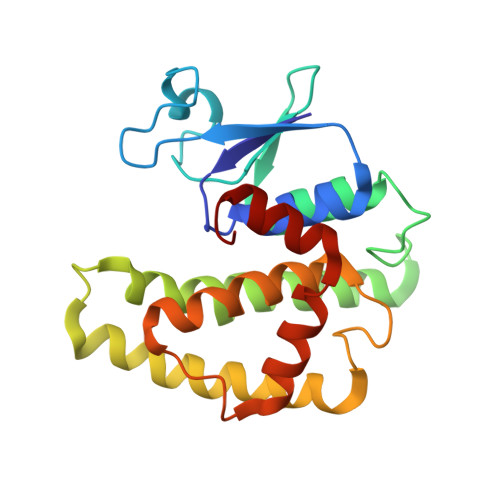Structures of Ternary Complexes of BphK, a Bacterial Glutathione S-Transferase That Reductively Dechlorinates Polychlorinated Biphenyl Metabolites.
Tocheva, E.I., Fortin, P.D., Eltis, L.D., Murphy, M.E.(2006) J Biological Chem 281: 30933-30940
- PubMed: 16920719
- DOI: https://doi.org/10.1074/jbc.M603125200
- Primary Citation of Related Structures:
2DSA, 2GDR - PubMed Abstract:
Prokaryotic glutathione S-transferases are as diverse as their eukaryotic counterparts but are much less well characterized. BphK from Burkholderia xenovorans LB400 consumes two GSH molecules to reductively dehalogenate chlorinated 2-hydroxy-6-oxo-6-phenyl-2,4-dienoates (HOPDAs), inhibitory polychlorinated biphenyl metabolites. Crystallographic structures of two ternary complexes of BphK were solved to a resolution of 2.1A. In the BphK-GSH-HOPDA complex, GSH and HOPDA molecules occupy the G- and H-subsites, respectively. The thiol nucleophile of the GSH molecule is positioned for SN2 attack at carbon 3 of the bound HOPDA. The respective sulfur atoms of conserved Cys-10 and the bound GSH are within 3.0A, consistent with product release and the formation of a mixed disulfide intermediate. In the BphK-(GSH)2 complex, a GSH molecule occupies each of the two subsites. The three sulfur atoms of the two GSH molecules and Cys-10 are aligned suitably for a disulfide exchange reaction that would regenerate the resting enzyme and yield disulfide-linked GSH molecules. A second conserved residue, His-106, is adjacent to the thiols of Cys-10 and the GSH bound to the G-subsite and thus may stabilize a transition state in the disulfide exchange reaction. Overall, the structures support and elaborate a proposed dehalogenation mechanism for BphK and provide insight into the plasticity of the H-subsite.
- Department of Microbiology and Immunology, University of British Columbia, Vancouver, British Columbia V6T 1Z3, Canada.
Organizational Affiliation:

















